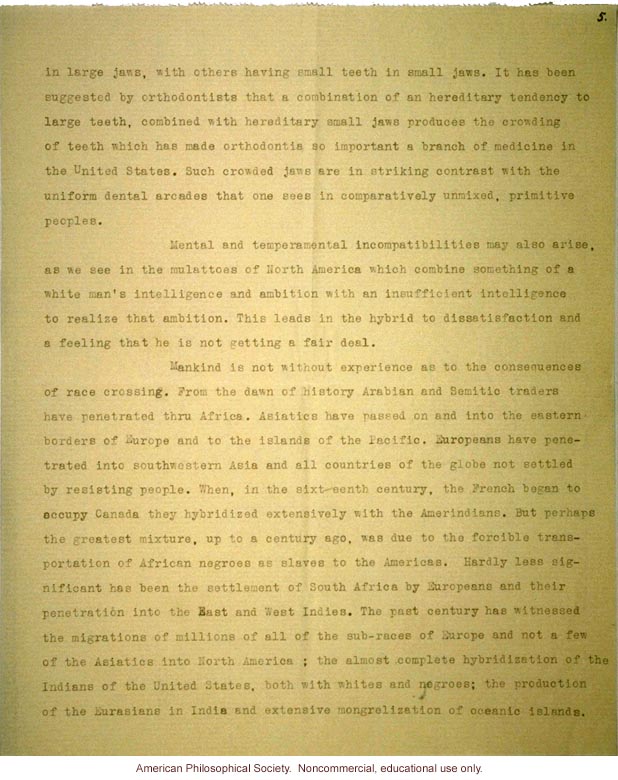"Race crossing in man," by C. Davenport (4)

Davenport attempts to justify his ideas concerning the mixing of races with 'scientific' evidence, often using chicken analogies.
451. in large jaws, with others having small teeth in small jaws. It has been suggested by orthodontists that a combination of an hereditary tendency is large teeth, combined with hereditary small jaws produces the crowding of teeth which has made orthodontia so important a branch of medicine in the United States. Such crowded jaws are in striking contrast with the uniform dental arcades that one sees in comparatively unmixed, primitive peoples. Mental and temperamental incompatibilities may also arise, as we see in the mulattoes of North America which combine something of a white man's intelligence and ambition with an insufficient intelligence to realize that ambition. This leads in the hybrid to dissatisfaction and the feeling that he is not getting a fair deal. Mankind is not without experience as to the consequences of race crossing. From the dawn of history Arabian and Semitic traders have penetrated through Africa. Asiatics have passed on and into the eastern borders of Europe and to the islands of the Pacific. Europeans have penetrated into southwestern Asia and all the countries of the globe now settled by resisting people. When, in the sixt-eenth[sic] century, the French began to occupy Canada they hybridized extensively with the Amerindians. But perhaps the greatest mixture, up to a century ago, was due to the forcible transportation of African negroes as slaves to the Americas. Hardly less significant has been the settlement of South Africa by Europeans and their penetration into the East and West Indies. The past century has witnessed the migrations of millions of all the sub-races of Europe and not a few of the Asiatics into North America; the almost complete hybridization of the Indians of the United States, both with whites and negroes; the production of the Eurasians in India and extensive mongrelization of oceanic islands.
- ID: 10446
- Source: DNALC.EA


